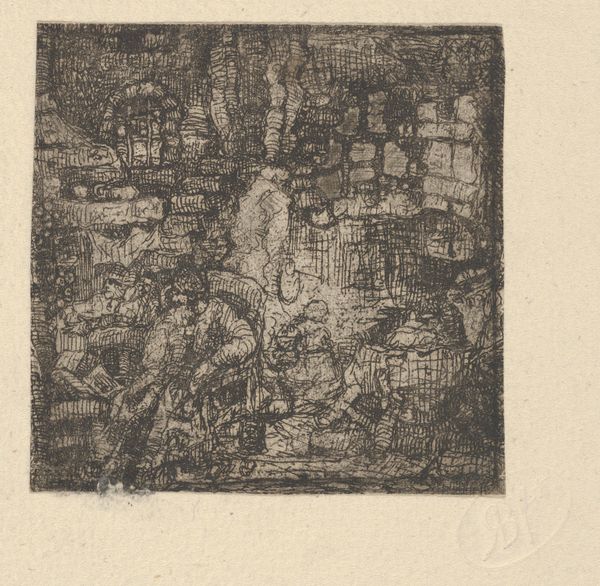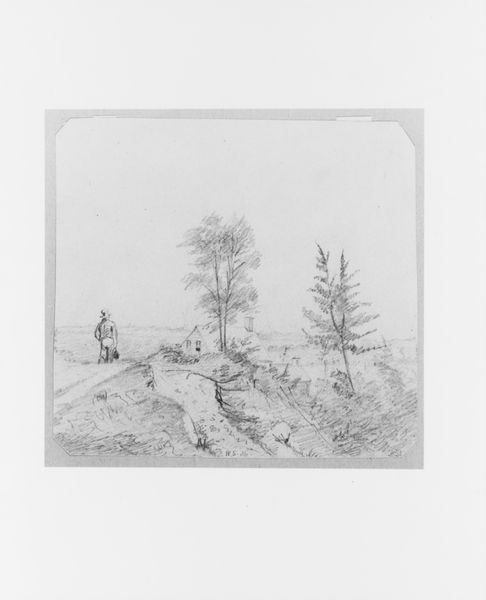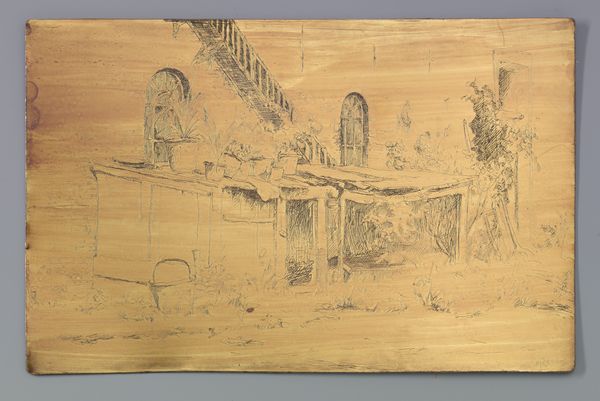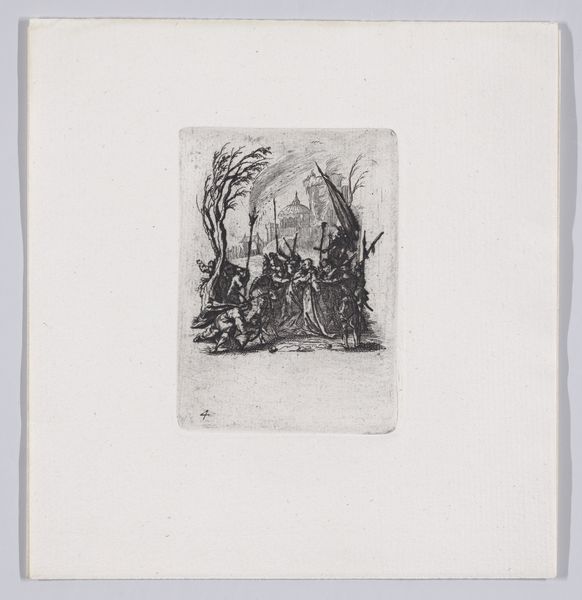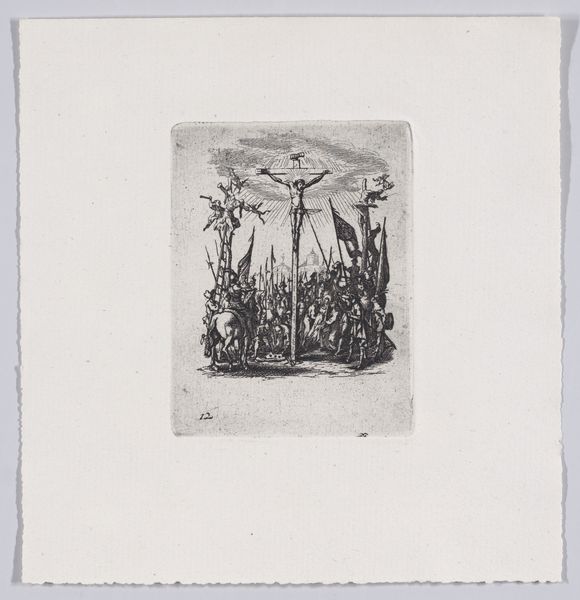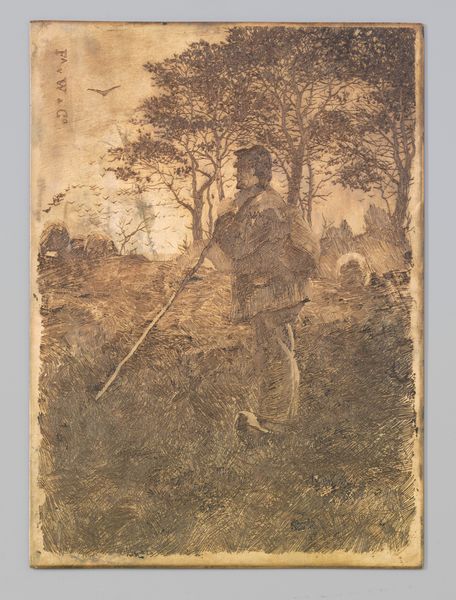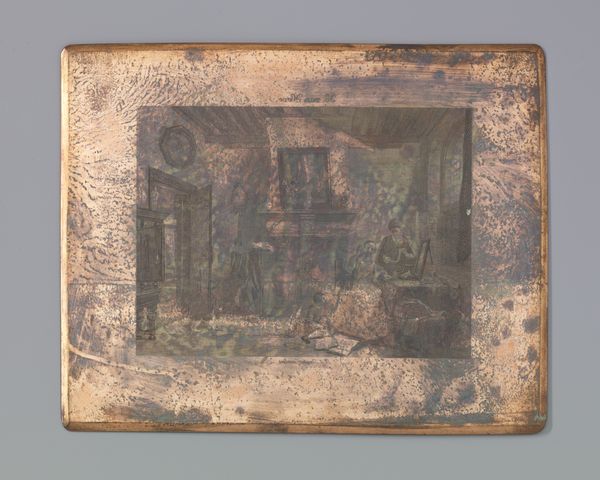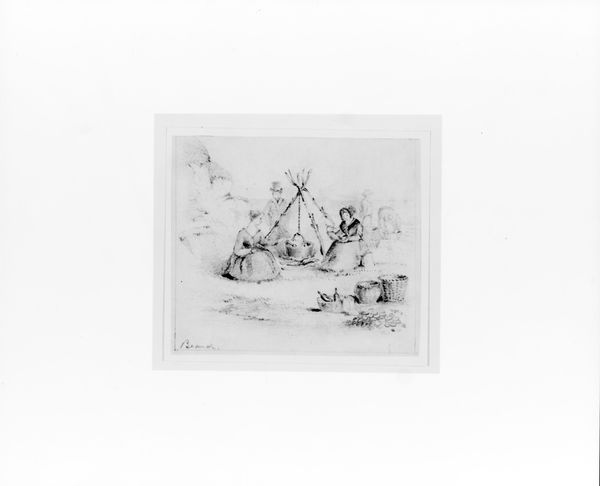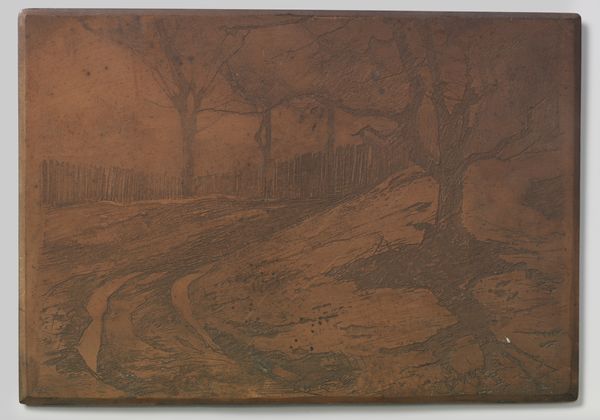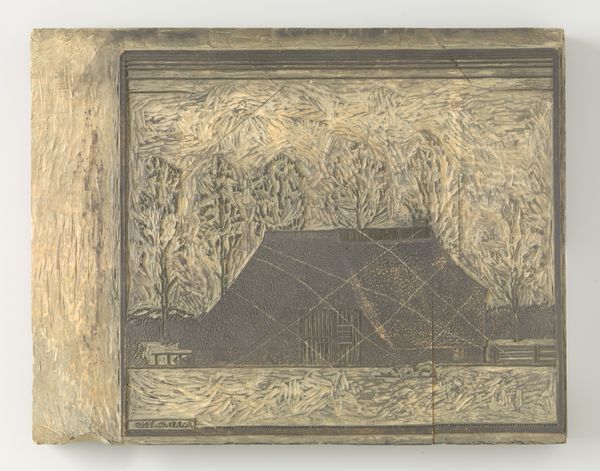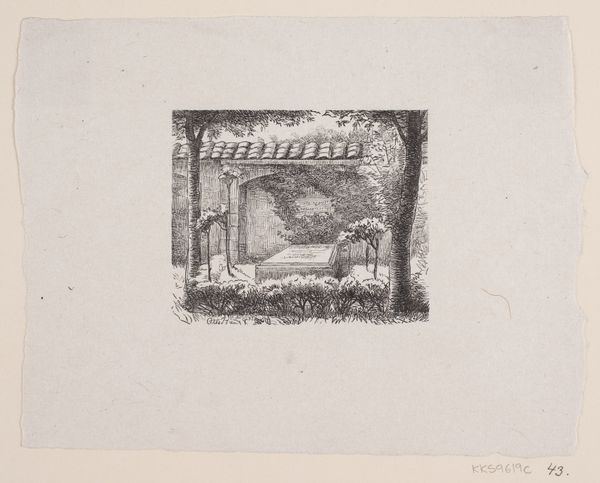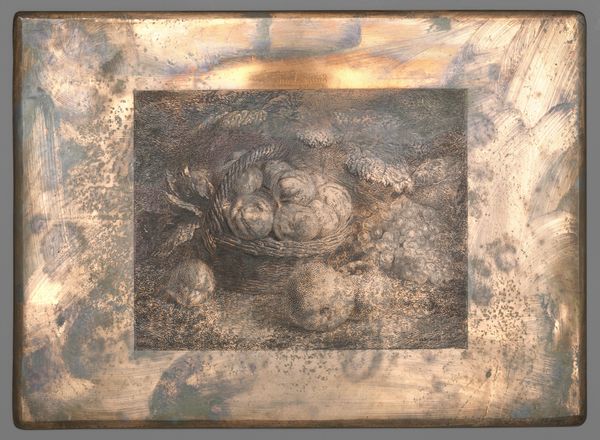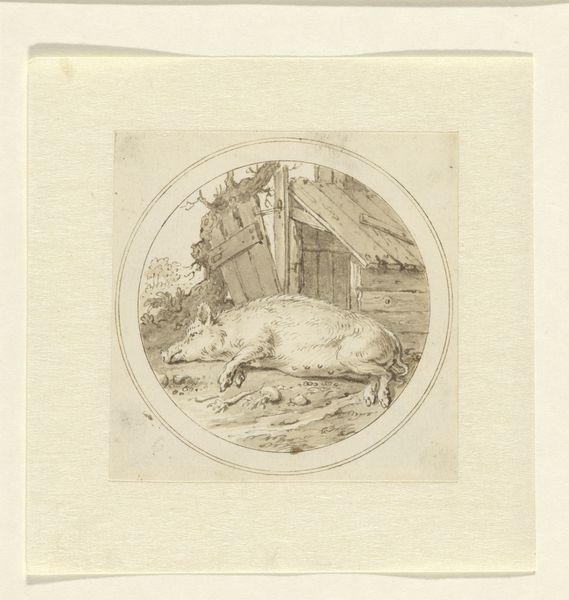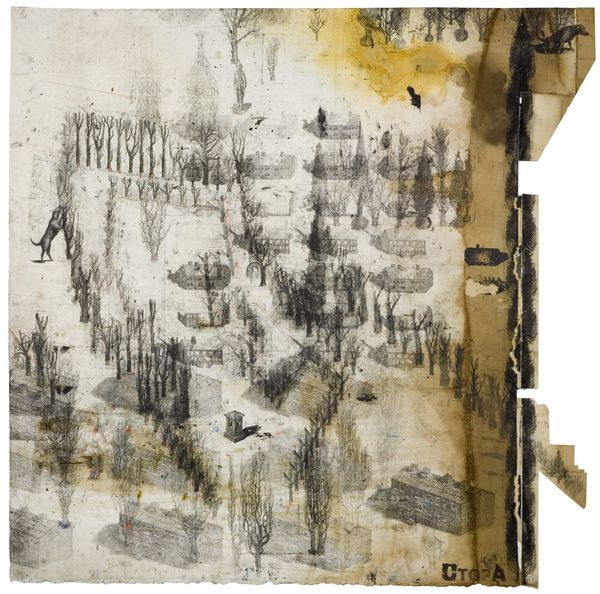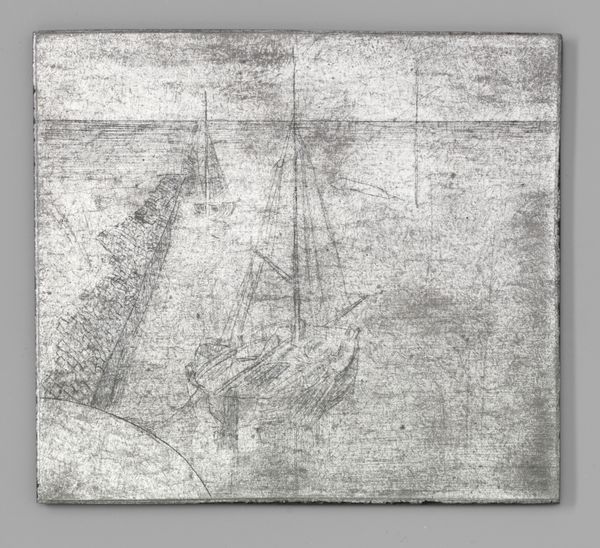
drawing, print, glass
#
drawing
# print
#
sculpture
#
landscape
#
11_renaissance
#
glass
#
oil painting
#
genre-painting
#
northern-renaissance
Dimensions: Overall: 9 1/2 in. (24.1 cm)
Copyright: Public Domain
Curator: Augustin Hirschvogel's “Roundel with Netting Quail," dating roughly from 1500 to 1600, is a fascinating example of Northern Renaissance glasswork, currently held at the Metropolitan Museum. Editor: My first thought is: remarkable level of detail for such a small format, particularly the texture rendered through the brown enamel paint. But what's the narrative here? There is this large "painting" within the glass artwork: it is curious and makes me feel off. Curator: Indeed. Hunting scenes were common, but consider the quail themselves – traditionally associated with timidity, and yet, gathered together. The round shape itself can signify wholeness, so the act of trapping disrupts a sort of symbolic unity. Editor: Absolutely, but also how labor is represented. Someone had to blow and spin the glass, mix and apply the enamel, build and then tend those elaborate nets. Even in something that reads at first glance as decorative, there is work at stake. The artist also suggests, literally, a painting, or "sculpture" within their artwork. I mean, the whole scene feels crafted—quite literally fabricated. The amount of resources required and time involved is mind-boggling. Curator: Good point. Hirschvogel often embedded complex theological or philosophical ideas within these pastoral scenes. The artificiality of that painted cow is part of the symbolism. Think about what it represents, the relationship between the animals and their representation. It asks viewers to confront constructed reality. Editor: Fascinating perspective. It challenges us to consider that art is an imitation of life as they trap wild birds. Also the work of landscape versus figuration represented together: The means of survival and aesthetic appreciation are intimately connected. And it makes you wonder about who used or consumed artworks like this. It offers up a complex picture, doesn't it? Curator: Yes, it certainly invites many interpretations, from religious allegory to the practicalities of sustenance and the social stratification embedded within the work of art, a small window into a world both beautiful and deeply considered. Editor: Indeed. This piece certainly makes you look past the image to the processes of creation and reception. Thank you!
Comments
No comments
Be the first to comment and join the conversation on the ultimate creative platform.
